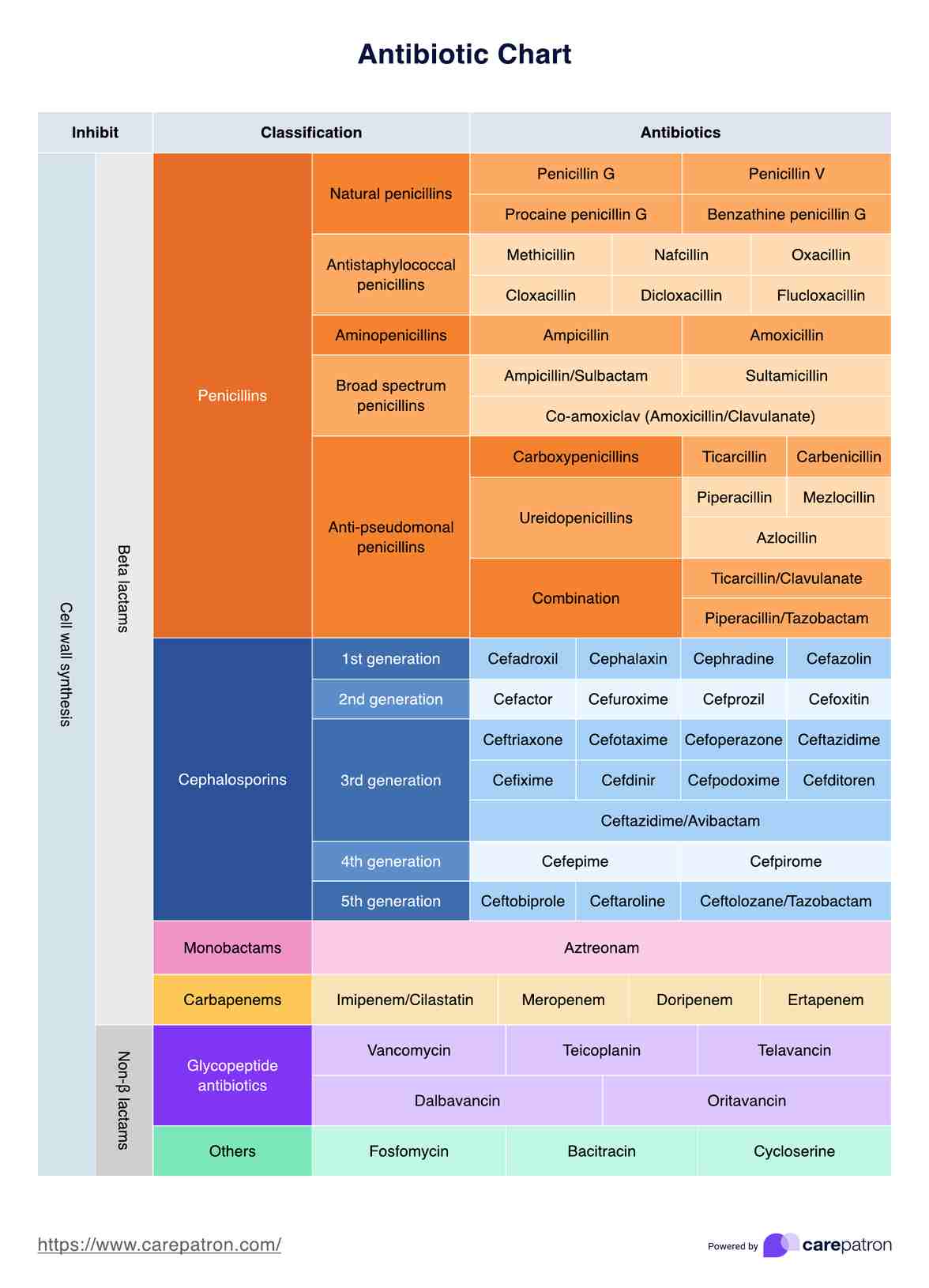Healthcare professionals use an Antibiotic Chart to guide the appropriate selection of antibiotics for treating bacterial infections, ensuring effective and safe medication practices.

Antibiotic Chart
Use our Antibiotic Chart to aid treatment decisions and resistance management.
Use Template
Antibiotic Chart Template
Commonly asked questions
Antibiotic Charts are updated regularly, often annually, to incorporate the latest research, antibiotic availability, and local antibiotic resistance patterns.
While anyone can view an Antibiotic Chart, its use is intended for healthcare professionals with the expertise to interpret and apply the information appropriately in clinical settings.
EHR and practice management software
Get started for free
*No credit card required
Free
$0/usd
Unlimited clients
Telehealth
1GB of storage
Client portal text
Automated billing and online payments











